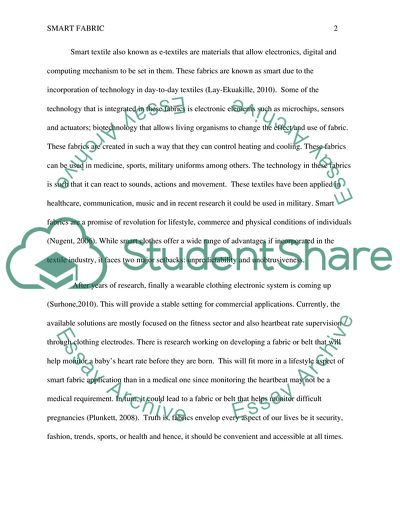Cite this document
(Smart Fabric Essay Example | Topics and Well Written Essays - 1250 words - 1, n.d.)
Smart Fabric Essay Example | Topics and Well Written Essays - 1250 words - 1. https://studentshare.org/design-technology/1772056-smart-fabric
Smart Fabric Essay Example | Topics and Well Written Essays - 1250 words - 1. https://studentshare.org/design-technology/1772056-smart-fabric
(Smart Fabric Essay Example | Topics and Well Written Essays - 1250 Words - 1)
Smart Fabric Essay Example | Topics and Well Written Essays - 1250 Words - 1. https://studentshare.org/design-technology/1772056-smart-fabric.
Smart Fabric Essay Example | Topics and Well Written Essays - 1250 Words - 1. https://studentshare.org/design-technology/1772056-smart-fabric.
“Smart Fabric Essay Example | Topics and Well Written Essays - 1250 Words - 1”. https://studentshare.org/design-technology/1772056-smart-fabric.


